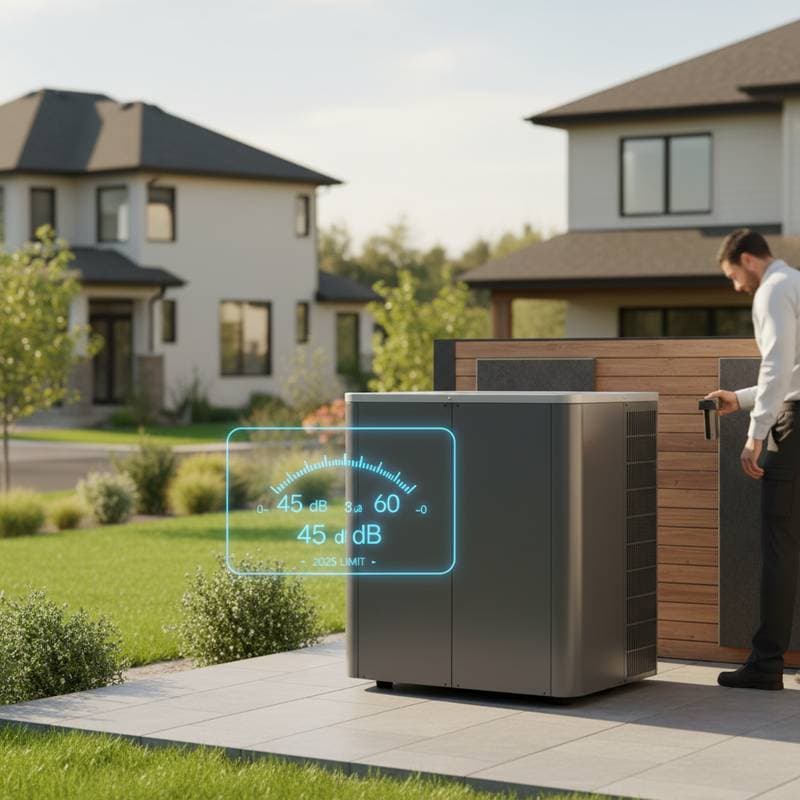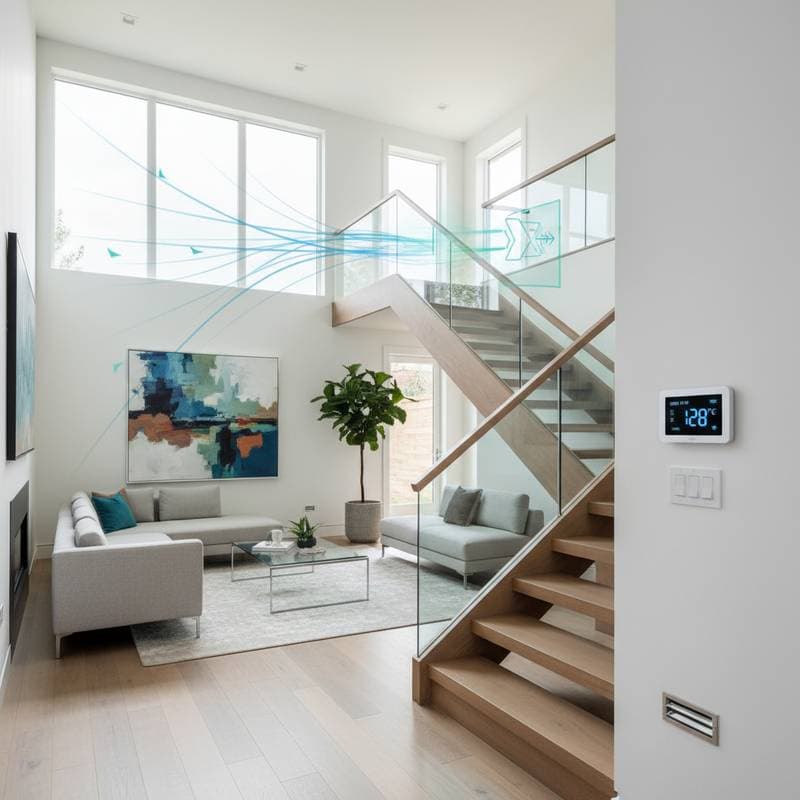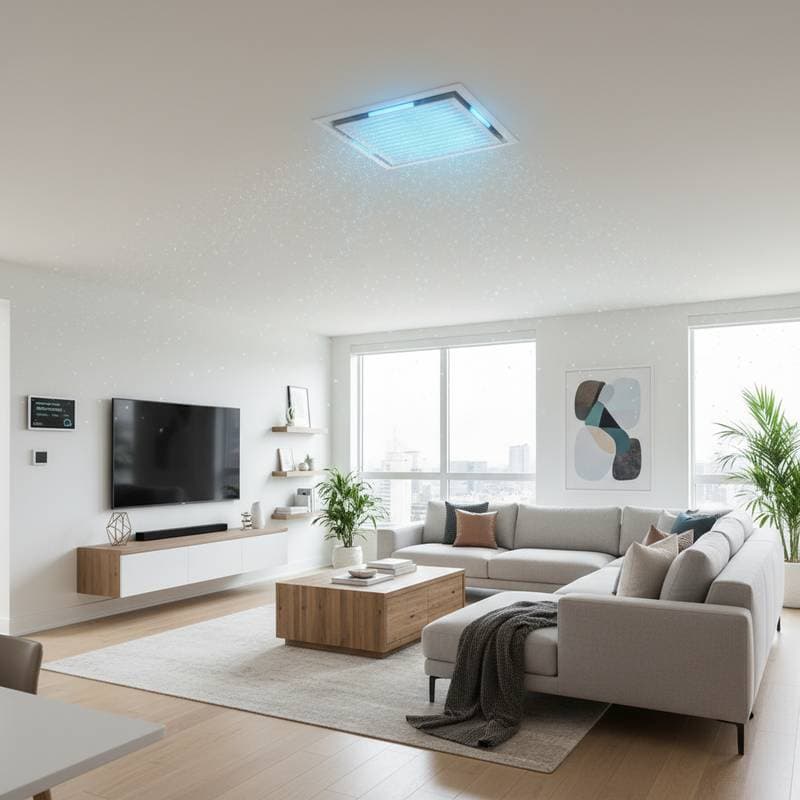Heat Pumps Deliver Up to 300% Greater Efficiency Than Gas Heating in 2025
Homeowners seeking reduced energy expenses and reduced dependence on fossil fuels find heat pumps a superior alternative to traditional gas systems. These devices employ electricity to transfer heat rather than produce it through combustion, yielding up to three times the heating or cooling output relative to the energy input. The following sections detail the mechanics behind this performance, available system varieties, and methods to optimize energy conservation.
| Item | Key Insight |
|---|---|
| Average Efficiency | Up to 300% greater than gas heating |
| Average Installation Cost | $5,000 - $12,000 |
| Typical Annual Savings | 30% - 60% on heating bills |
| Lifespan | 15 - 20 years |
| Maintenance Frequency | Annual professional service |
Average Heat Pump Costs
Installation expenses for heat pumps depend on system variety, residence dimensions, and local weather conditions. Most homeowners allocate $5,000 to $12,000 for full setup, encompassing equipment and professional labor. Premium high-efficiency units or installations in expansive residences may approach $15,000, particularly if duct modifications prove necessary.
An entry-level air-source heat pump suited to a modest home typically ranges from $4,000 to $7,000. In contrast, geothermal options frequently surpass $20,000 due to subsurface components. Although initial investments appear substantial, geothermal models compensate through minimal ongoing operational expenses and superior performance longevity.
Key Factors That Affect Heat Pump Price
Multiple elements determine the final expense of a heat pump acquisition. Grasping these components enables precise financial planning and selection of the optimal configuration for specific residences.
Unit Size and Capacity
Heat pumps receive ratings in tons or British Thermal Units (BTUs) to indicate heating and cooling potential. Selecting an appropriately scaled unit promotes peak efficiency. Units that prove too small operate continuously without adequate coverage, whereas oversized versions cycle inefficiently, consuming excess power. Engage a qualified HVAC specialist for a thorough evaluation to identify the precise capacity requirements.
Efficiency Rating (SEER2 and HSPF2)
The Seasonal Energy Efficiency Ratio 2 (SEER2) evaluates cooling effectiveness, while the Heating Seasonal Performance Factor 2 (HSPF2) assesses heating capability. Elevated ratings correspond to diminished operational costs. Standard models exhibit SEER2 values of 15 to 17, with advanced versions exceeding 20. Opting for superior efficiency elevates initial outlay yet substantially curtails lifetime energy expenditures.
Installation Complexity
Heat pump integration demands electrical wiring, refrigerant piping, and occasional duct enhancements. Residences equipped with preexisting central air frameworks require limited alterations. Conversely, older structures might necessitate comprehensive modifications, thereby increasing labor charges.
Brand and Quality
Reputable manufacturers provide extended warranties, reduced noise levels, and innovative elements like variable-speed compressors. Such premium systems command higher prices but deliver enhanced comfort, durability, and operational reliability.
Types of Heat Pumps
Several heat pump categories exist, each presenting distinct benefits and suitable scenarios.
Air-Source Heat Pumps
Air-source units represent the predominant and economical choice. They draw thermal energy from ambient outdoor air for indoor warming in colder months and invert the process for summer cooling.
Pros:
- Cost-effective setup
- Compatible with current duct systems
- Effective in temperate regions
Cons:
- Diminished performance in severe winter conditions
- Necessitates exterior space for the condenser unit
Ductless Mini-Split Heat Pumps
Ductless systems feature indoor wall units linked to an external compressor. They suit homes lacking duct infrastructure or targeted room enhancements.
Pros:
- Precise zoning for temperature regulation
- Simplified installation process
- Exceptionally low noise during operation
Cons:
- Elevated per-room equipment expenses
- Visible indoor components may impact interior design
Geothermal Heat Pumps
Geothermal variants utilize buried loops to exchange heat with the earth, achieving unparalleled efficiency and consistent comfort across seasons.
Pros:
- Minimal running costs
- Extended durability
- Unwavering output regardless of external temperatures
Cons:
- Substantial upfront installation fees
- Demands available land for loop placement
Signs You Need a Heat Pump Upgrade
Certain indicators suggest the value of replacing or enhancing an existing heating setup:
- Escalating utility statements without changes in consumption patterns
- Inconsistent temperature distribution throughout the home
- Recurrent malfunctions or unusual operational sounds
- Presence of an obsolete gas furnace paired with a separate air conditioner
- Interest in adopting sustainable electric-based heating solutions
A contemporary heat pump consolidates furnace and air conditioning functions, streamlining upkeep and overall energy demands.
The Heat Pump Installation Process
Certified professionals handle installations to guarantee efficacy and safety. The procedure unfolds as follows:
- Home evaluation: Specialists inspect insulation quality, existing ducts, and electrical infrastructure.
- System selection: Appropriate sizing and model selection occur based on architectural features and regional climate.
- Preparation: Removal of prior equipment precedes any required duct or wiring adaptations.
- Installation: Assembly of the heat pump, refrigerant conduits, and control thermostat takes place.
- Testing: Verification confirms proper airflow, refrigerant levels, and functional integrity.
- Homeowner orientation: Instruction covers system controls and routine maintenance protocols.
Heat Pump Labor Costs
Labor constitutes 30% to 40% of overall installation expenditures. Technicians bill $75 to $150 hourly, varying by location and project intricacy. Basic air-source projects conclude in a single day, whereas geothermal installations span multiple days owing to groundwork and loop embedding. Selecting credentialed experts ensures compliant refrigerant management and sustained system performance.
Frequently Asked Questions About Heat Pumps
How does a heat pump save three times more energy than gas?
Heat pumps relocate existing heat rather than generate it via burning fuel. For each unit of electricity consumed, they relocate up to three units of thermal energy, attaining approximately 300% efficiency versus gas systems that hover around 90%.
Can a heat pump work in cold climates?
Contemporary cold-climate heat pumps maintain robust efficiency in subzero conditions. Features such as variable-speed compressors and specialized refrigerants sustain effective heating throughout harsh winters.
How long does a heat pump last?
Properly serviced heat pumps endure 15 to 20 years. Consistent professional inspections, filter replacements, and accurate sizing contribute to prolonged service life.
Do heat pumps require annual maintenance?
Annual servicing remains essential to preserve efficiency and avert breakdowns. Technicians clean coils, inspect refrigerant charges, and replace air filters during these visits, preventing efficiency losses and extending equipment longevity.
Are heat pumps environmentally friendly?
Heat pumps promote environmental sustainability by diminishing fossil fuel usage and associated carbon emissions. Compared to gas alternatives, they cut greenhouse gases by up to 50%, supporting broader goals of energy conservation and climate mitigation.
Can a heat pump provide hot water too?
Certain heat pump configurations integrate with domestic hot water production, such as through hybrid setups or dedicated water-source models. For comprehensive solutions, consult professionals to evaluate compatibility with existing plumbing and energy needs.
Steps to Upgrade Your Home Heating in 2025
Transitioning to a heat pump in 2025 positions homeowners for substantial savings and environmental benefits. Begin with a professional energy audit to pinpoint ideal system specifications. Explore available incentives, such as federal tax credits, to offset installation costs. Schedule consultations with certified installers early to secure optimal pricing and timely completion before peak heating season arrives. This proactive approach ensures reliable, efficient comfort for years ahead.





